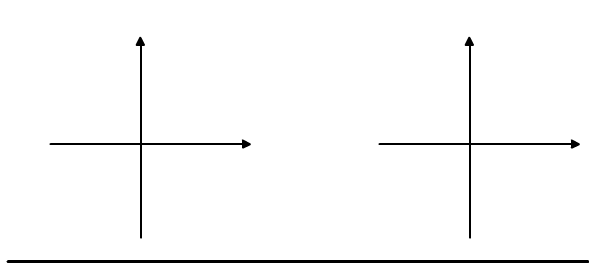Definition 4.3.1
Let X be a set, an indexed family (Xi) i ∈ I of non-empty subsets of the set X is called a partition of set X iff
![]() .
.
| « previous section | next section » |
Consider the set of students of a University. In a natural way we
can distinguish two groups: women and men. Thus we have divided the set
of
students onto two disjoint classes. Assuming that among our students
there are women
and men, the classes are non-empty. In a similar way one can
partition the set of all students onto the groups with respect to their
progress. So we have a group of students of the first year, a group of
students
of the second year, ..., a group of students of the fifth year. All of
them are
non-empty sets.
The mathematical formalization of the notion of partition is given
below.
Definition 4.3.1
Let X be a set, an indexed family (Xi) i ∈ I of non-empty subsets of the set X is called a partition of set X iff
![]() .
.
Let us consider the following partition of a plane determined by the axes of the system of coordinates:
X1 = {(x, y) ∈ R2 : x ≥ 0 and y >0},
X2 = {(x, y) ∈ R2 : x<0 and y ≥ 0 },
X3 = {(x, y) ∈ R2 : x ≤ 0 and y <0},
X4 = {(x, y) ∈ R2 : x>0 and y ≤ 0},
X5 = {(0, 0)}.
Each point belongs to exactly one subset, c.f. Figure 4.3.1(a)
Another partition of the same plane is given by the sets {(x, y) ∈ R2 : x ≥ 0}, {(x, y) ∈ R2 : x<0 } shown on Figure 4.3.1(b). In this partition each point belongs to either left or right halfplane.

Fig. 4.3.1 (a) Partition of the plane onto 5 parts. (b)
Partition of the plane onto 2 parts.
Example 4.3.1
Let K(x) be a set of points of a circle with the center in the origin O of the system of coordinatesand of radius x, x ∈ R ≥0. Let us assume additionally that the origin O is the circle of radius 0. The family of all circles K(x) for x ∈ R ≥0 is a partition of plane. Indeed, every circle is a non-empty set. Every point belongs to a certain circle (the point of coordinates (x, y) belongs to the circle K( √ (x2 +y2)). Moreover, for every two different real numbers x and x', circles K(x) and K(x') are disjoint.
Question 4.3.1 Let X1 = {x ∈ N: x is the square of an even number}, X2 = {x ∈ N: x is a prime number}, X3 = {x ∈ N: x is the square of an odd number}. Does this family form a partition of the set of all natural numbers N?
| « previous section | next section » |